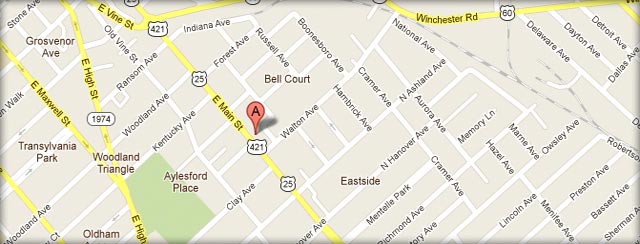- ATV accidents
- Brain Injuries
- Bus Accident
- Car Accidents
- Construction Accident
- Distracted Driving
- Drugged Driving Accident
- DUI
- Firm News
- Mass Tort
- Medical Malpractice
- Motorcycle Accidents
- Pedestrian Accidents
- Personal Injury
- Product Liability
- Safety
- Social Security Disability
- Truck Accidents
- Vehicle Accidents
- Workers Compensation
- Workplace Injuries

For parents, there’s nothing more terrifying than learning that their teenager has been in a car accident. Unfortunately, parents have limited power when it comes to stopping some of the most common behaviors that result in teen fatalities, such as texting, drinking, and not wearing a seat belt. But a new study from the Insurance Institute of Highway Safety indicates that one thing parents can do to reduce the chances of a deadly crash is to avoid purchasing older, smaller vehicles for their teens.
The study, published in the journal Injury Prevention, found that nearly half of teens killed over a five year period were in cars that were at least 11 years old. Nearly one third were in smaller cars compared to middle aged counterparts killed over the same time period.
Unfortunately, Kentucky has one of the highest rates of teen crashes in the U.S., according to the Kentucky Transportation Cabinet. Teenage drivers represent only about 6 percent of the state’s driving population, but are involved in about 18 percent of fatal crashes and more than 20 percent of all crashes. In 2013, 80 young drivers ages 15 to 20 were killed in traffic accidents in Kentucky, according to the National Highway Traffic Safety Administration.
Researchers found that many of the older, smaller cars involved in crashes were lacking safety features that have proven to save lives. Only 12 percent of teenagers were in cars with standard side airbags. Even fewer had electronic stability control systems, which automatically apply brakes on individual wheels to help a driver regain control in dangerous situations and prevent rollovers.
The government mandated that electronic stability control systems be the standard in cars in 2012, after finding that it could save as many as 9,600 lives and prevent 238,000 injuries each year. But only three percent of teen cars in the study had electronic stability control, according to the findings.
A piece of good news is that IIHS found that 91 percent of cars came equipped with stability control by model year 2010. Unfortunately, 82 percent of teens in the study were driving cars that were at least six years old, meaning that they were still less likely to have cars with the safety feature.
Parents: Consider These Points When Buying a Car
One of the main reasons why teens end up with older cars is affordability. Many parents anticipate their teens will have a few fender benders, so they don’t want to spend a large amount of money on cars that are more likely to get in accidents.
But parents should seek to find the safest car possible at a price they can afford for their teen drivers.
Here are some of IIHS’s tips for buying a car for a teenager:
- Choose a car with low horsepower: A powerful engine is a temptation to teens who are beginning to test boundaries.
- Go with a bigger, heavier car: Size does matter. The larger the car, the fewer deaths there were, according to the study.
- Pay attention to the crash test ratings: Cars that perform well in crash tests also perform well in real life crashes.
- Get electronic stability control systems: There’s a reason why regulators decided that ESC should come standard in all vehicles. If your budget allows for it, make sure your child’s car has it.
Other Resources
If you’re in the market for a car for your teen now and plan on getting a new model, IIHS has its 2015 TOP SAFETY PICK or TOP SAFETY PICK+ list here.
But since many parents aren’t looking for a new car, the agency also has developed a list of its top used cars for beginning drivers on a budget here.
Whichever option you choose, the Frank Jenkins Law Office strongly encourages you to make sure your teenager has a lot of supervised practice driving before being set free on the roads. Kentucky has a graduated driver’s license law that limits young drivers as they gain more experience, prohibiting driving from midnight to 6 a.m. except in emergencies and restricting the number of young passengers a teen driver can have. After the teenage driver has full driving privileges, you may wish to set your own rules. Consider:
- Limiting night driving by setting a curfew.
- Prohibiting passengers in the vehicle with your teen for a period of time.
- Considering an in vehicle monitoring device. Many cars have technology that can allow parents to see whether their child has been speeding, ignoring seat belt rules, and braking suddenly.
- Set consequences for ignoring the rules of the road and enforce them.
- Be a good role model. Get off the phone, obey the law, and acknowledge your driving mistakes if your teen calls you on it.

